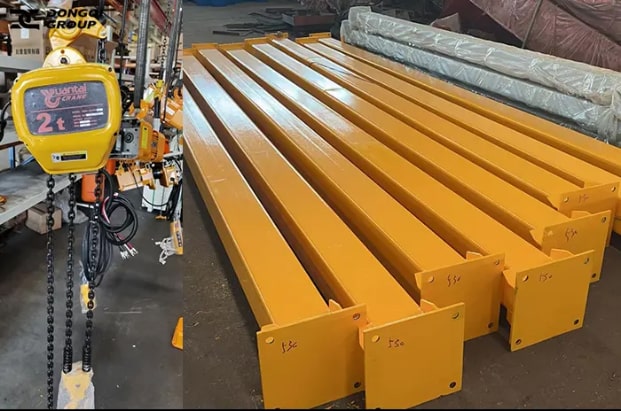Assembly shops need reliable, efficient material handling solutions that can handle heavy loads with ease. Freestanding workstation cranes are the perfect solution for this requirement. DongqiCrane designed and supplied a 2 tonne KBK light crane system to an assembly shop in Australia. Our freestanding workstation crane system is a modular and flexible material handling solution that can be customized to meet the specific needs of an assembly shop.
2 tons freestanding workstation crane sold to Australia
Project scope:
Freestanding workstation cranes After confirming the available working space in the assembly workshop with the customer, it should be ensured that there is enough space for safe operation. The project involved the installation of a 2 tonne freestanding workstation crane system in an assembly shop. The system will consist of two parallel runways, each 20 meters long, and four suspension points. The crane will be equipped with a 2 ton electric chain hoist.
Crane Solutions:
Freestanding workstation crane systems are based on steel and aluminum profiles and smooth-running trolleys for easy movement of lifting equipment. The low dead weight of the profile section also contributes to its smooth-running characteristics, improving ergonomics and minimizing physical fatigue.
The single-beam suspension system can also be extended as needed to easily reach hard-to-reach places in the workshop, such as between pillars and brackets. To meet different requirements in production, assembly and transportation applications.
Freestanding workstation cranes are equipped with advanced safety features such as overload protection, anti-collision sensors and emergency stop buttons. These safety features keep workers safe from any potential accidents or injuries while operating the crane.
Production and Packaging:
2 tons freestanding workstation crane installation process:

Site Preparation: The site will be cleared of any obstructions that may prevent installation or operation.
Runway Installation: Two parallel runways are installed together with their supporting structures.
Lifting point installation: Install four lifting points at equal intervals along each runway.
Lifting gear installation: The lifting gear will be installed at one end of the runway using a suspended trolley.
Test: Once everything is installed, a test is run to make sure everything is working.